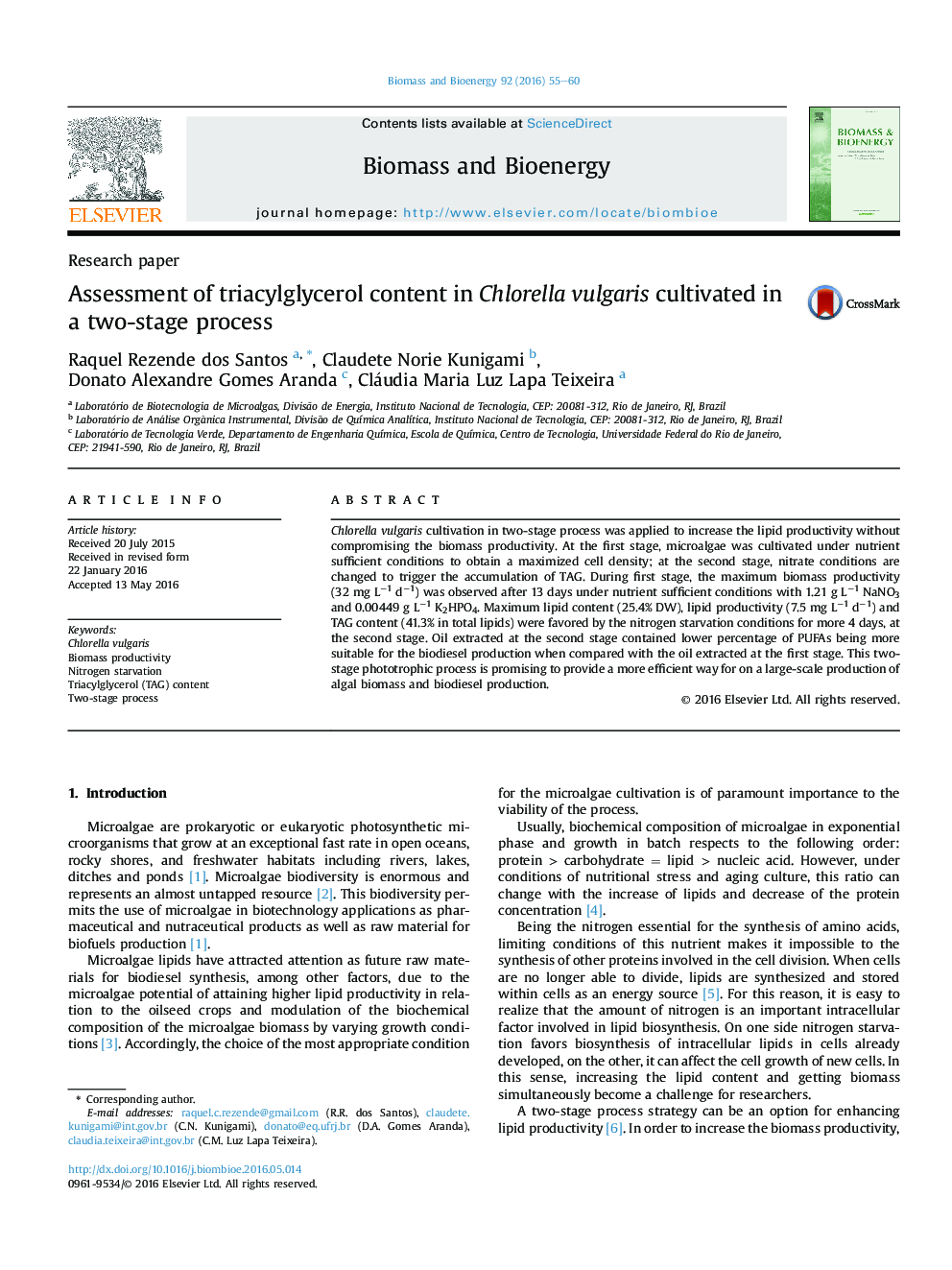| Article ID | Journal | Published Year | Pages | File Type |
|---|---|---|---|---|
| 7063186 | Biomass and Bioenergy | 2016 | 6 Pages |
Abstract
Chlorella vulgaris cultivation in two-stage process was applied to increase the lipid productivity without compromising the biomass productivity. At the first stage, microalgae was cultivated under nutrient sufficient conditions to obtain a maximized cell density; at the second stage, nitrate conditions are changed to trigger the accumulation of TAG. During first stage, the maximum biomass productivity (32 mg Lâ1 dâ1) was observed after 13 days under nutrient sufficient conditions with 1.21 g Lâ1 NaNO3 and 0.00449 g Lâ1 K2HPO4. Maximum lipid content (25.4% DW), lipid productivity (7.5 mg Lâ1 dâ1) and TAG content (41.3% in total lipids) were favored by the nitrogen starvation conditions for more 4 days, at the second stage. Oil extracted at the second stage contained lower percentage of PUFAs being more suitable for the biodiesel production when compared with the oil extracted at the first stage. This two-stage phototrophic process is promising to provide a more efficient way for on a large-scale production of algal biomass and biodiesel production.
Related Topics
Physical Sciences and Engineering
Chemical Engineering
Process Chemistry and Technology
Authors
Raquel Rezende dos Santos, Claudete Norie Kunigami, Donato Alexandre Gomes Aranda, Cláudia Maria Luz Lapa Teixeira,
